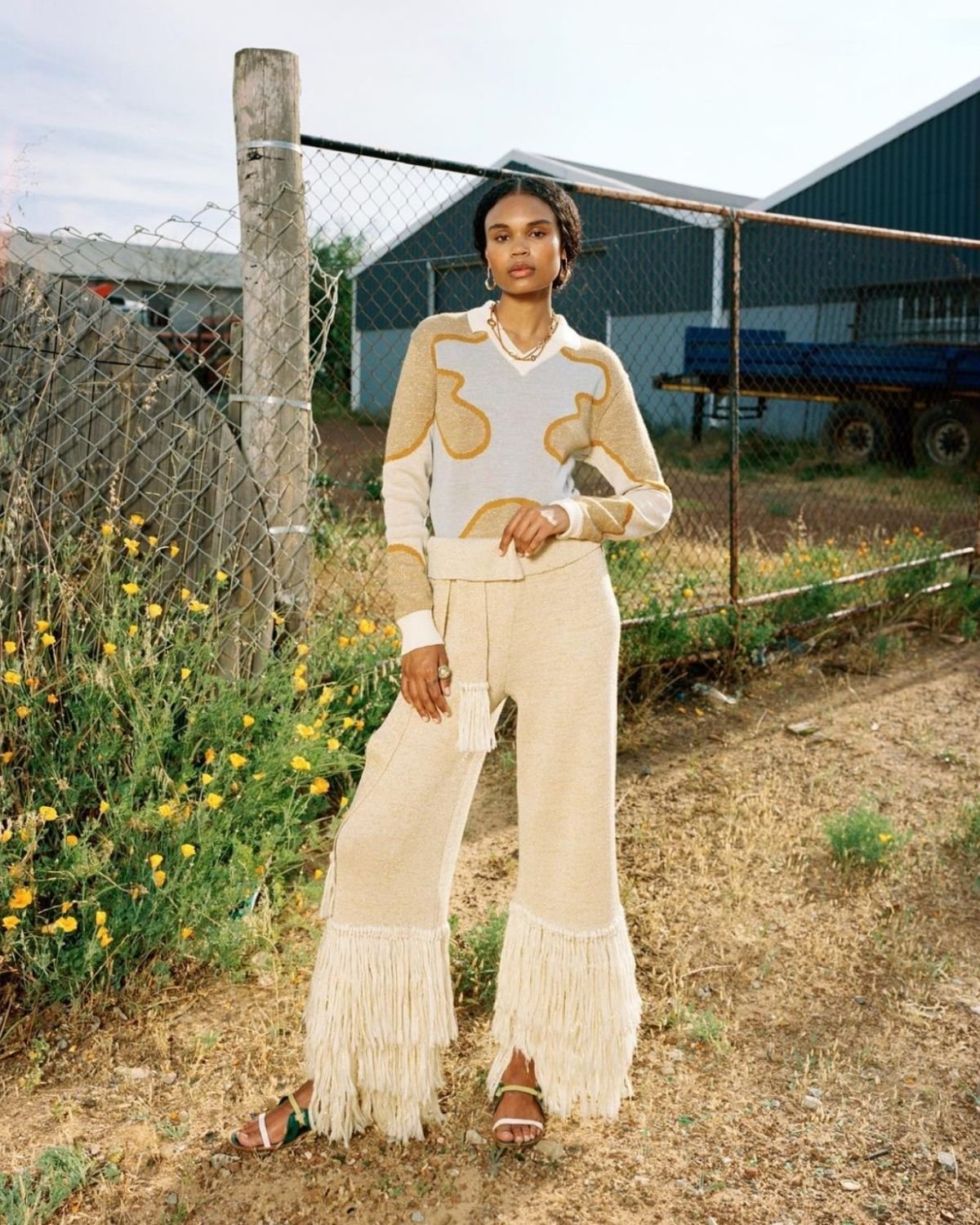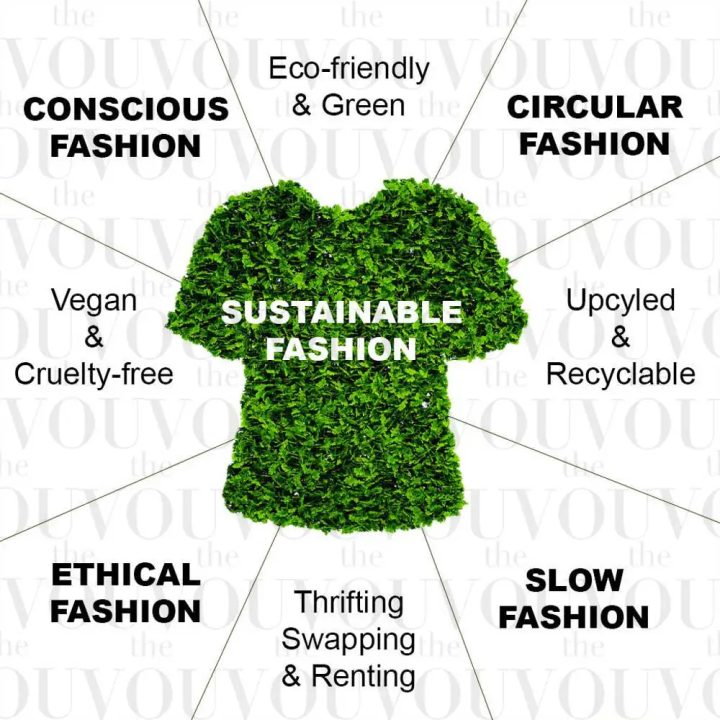Supporting Local Cape Town Sustainable Fashion for a Greener Future
Supporting Local Cape Town Sustainable Fashion for a Greener Future
Blog Article
Keep Ahead of the Contour by Discovering Cutting-edge Style Patterns
In a market as dynamic as fashion, remaining in advance includes greater than just following current fads-- it requires an expedition of advancement. Smart textiles, for example, are changing garments right into practical masterpieces, while 3D printing is revolutionizing layout procedures with its adjustable, waste-reducing abilities. As sustainability ends up being a cornerstone, innovations like eco-friendly products and round fashion practices are improving ecological obligation - Cape Town Sustainable Fashion. Additionally, the convergence of technology and fashion advertises a brand-new period of customer interaction. Just how, after that, can these emerging patterns redefine the future of style, and what effects do they hold for brand names looking for to thrive in this evolving landscape?

Embracing Smart Textiles
In recent times, the apparel industry has actually witnessed a transformative shift with the assimilation of clever textiles, a sophisticated innovation that mixes innovation with fabric. This development represents not just a combination of appearances and capability but likewise a considerable leap towards sustainability and customization in fashion. Smart fabrics, likewise referred to as e-textiles, embed innovative electronics such as sensing units and conductive threads within the fabric, allowing garments to connect with the wearer or the atmosphere.
These fabrics are created to keep an eye on physical criteria, such as heart price or body temperature, supplying real-time health and wellness analytics. Beyond health applications, clever textiles are likewise being used for flexible apparel, which can transform color or pattern in reaction to environmental stimuli, thus providing a vibrant fashion experience.
Furthermore, the growth of energy-harvesting fabrics that generate power from activity or sunshine is leading the way for self-dependent wearable modern technology. This technology is appealing to ecologically aware consumers and designers aiming to lower the environmental impact of fashion. As study and development in this area advance, smart textiles are expected to come to be progressively prevalent, improving the landscape of modern-day fashion with their multifunctional capacities.
The Rise of 3D Printing
Reinventing the manufacturing landscape, 3D printing has actually arised as a game-changer in the style sector. This sophisticated modern technology has allowed developers to push the boundaries of creativity, creating detailed and personalized garments that were formerly unthinkable. By leveraging digital layout and additive manufacturing, 3D printing helps with the development of complicated geometries and patterns, permitting developers to trying out new structures and structures.
A remarkable benefit of 3D printing in style is its capability to produce on-demand, decreasing waste and decreasing stock demands. This performance not just enhances production processes yet also permits fast prototyping, enabling designers to bring their visions to life in a much shorter timeframe. Furthermore, 3D printing sustains modification to a degree unmatched by standard methods, supplying distinct layouts and individualized fits customized to individual customer preferences.
The rise of 3D printing has also equalized style, making it easily accessible to emerging developers who can now produce high-quality pieces without significant economic investment in traditional manufacturing facilities. As technology remains to advance, the fashion business is poised to harness the full possibility of 3D printing, discovering brand-new materials and methods that will undoubtedly redefine just how fashion is conceived and generated.
Sustainable Fashion Technologies
As the garment industry grapples with the pressing demand for environmental responsibility, lasting style technologies have arised at the leading edge of transformative adjustment. The expanding awareness of environmental effect has actually sustained a change in the direction of even more eco-conscious methods and products. Designers and brands are currently prioritizing sustainability, integrating methods that decrease waste and minimize carbon impacts.
One considerable advancement is the rise of circular fashion, which highlights recycling and upcycling to extend the lifecycle of garments. This strategy not only lowers waste however likewise motivates consumers to embrace a more mindful strategy to apparel usage. In addition, making use of lasting materials, such as natural cotton, hemp, and recycled polyester, has gotten traction. These materials need less water and power during production, considerably decreasing environmental impact.
An additional advancement exists in the adoption of cutting-edge dyeing methods that utilize waterless processes or all-natural dyes, thus decreasing the substantial quantities of water and chemicals commonly used in fabric dyeing. In addition, developments in biotechnology have actually resulted in the creation of lab-grown natural leather and materials, offering eco pleasant and cruelty-free options to traditional products. With these introducing initiatives, the fashion sector is making meaningful strides towards a more lasting future.

Tech-Integrated Garments
Tech-integrated clothing stands for a groundbreaking blend of fashion and technology, reshaping just how individuals interact with their garments. This ingenious domain name is marked by the incorporation of smart textiles and embedded digital elements, boosting both performance and visual appeal. From physical fitness trackers installed in sportswear to heated jackets regulated by means of mobile phone applications, tech-integrated garments provides consumers unmatched convenience and flexibility.
Introducing brands are driving this trend, concentrating on developing garments that react to environmental stimulations or user commands. As an example, some garments can transform shade or pattern in action to temperature level changes, while others include biometric sensors to monitor wellness metrics like heart price or tension levels. The seamless combination of modern technology right into fabrics also includes ecological sustainability, with efforts to establish self-cleaning materials or garments that get used to climate condition, therefore minimizing the need for multiple layers.
Additionally, the advent of wearable modern technology is not just restricted to apparel however includes devices like watches and eyewear, further broadening the scope of tech-integrated fashion. As the industry remains to introduce, the potential for customization and customization in clothing expands, supplying consumers distinct, tech-enhanced fashion experiences that satisfy their private requirements and preferences.
Future of Virtual Fashion
Recently, the future of virtual fashion has actually arised as a transformative force within the sector, leveraging innovations in digital innovation to redefine just how style is created, experienced, and eaten. By incorporating enhanced truth (AR), virtual fact (VR), and 3D layout tools, developers can currently craft immersive and interactive experiences that go beyond typical fashion borders. Virtual style enables for the production of garments that exist exclusively in electronic settings, providing unlimited opportunities for advancement without the limitations of physical production.
This electronic shift not only offers possibilities for creative expression however likewise addresses sustainability problems integral in standard fashion methods. Cape Town Sustainable Fashion. By eliminating the need for physical resources, digital style decreases waste and lessens see it here carbon impacts. Furthermore, the top article surge of virtual fashion aligns with the raising consumer demand for unique and personalized experiences, as online garments can be customized and customized to individual preferences with simplicity

Final Thought
The style industry's future lies in the integration of sustainable techniques and ingenious modern technologies - Cape Town Sustainable Fashion. Smart textiles and tech-integrated apparel are improving performance, while 3D printing uses opportunities for personalization and waste decrease. Sustainable style, via eco-friendly materials and round approaches, shows a dedication to ecological stewardship. Furthermore, online style is poised to redefine customer interactions. Adapting to these trends is vital for brands looking for to remain appropriate and competitive in this swiftly progressing landscape.
In current years, the style industry has experienced a transformative change with the integration of wise fabrics, a sophisticated technology that blends innovation with material.As the style sector grapples with the pressing requirement for environmental responsibility, sustainable style advancements have emerged at the leading edge of transformative change.In current years, the future of online style has actually arised as a transformative force within the industry, leveraging improvements in digital technology to redefine just how style is developed, experienced, and taken in. The surge of online fashion lines up with the right here enhancing customer demand for one-of-a-kind and tailored experiences, as digital garments can be personalized and customized to private preferences with convenience.
The style sector's future lies in the assimilation of ingenious technologies and sustainable methods.
Report this page